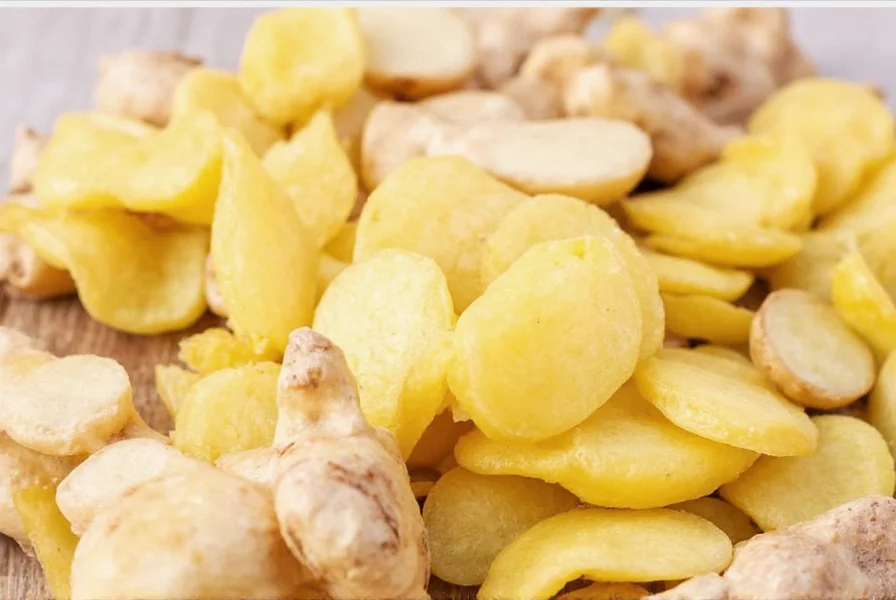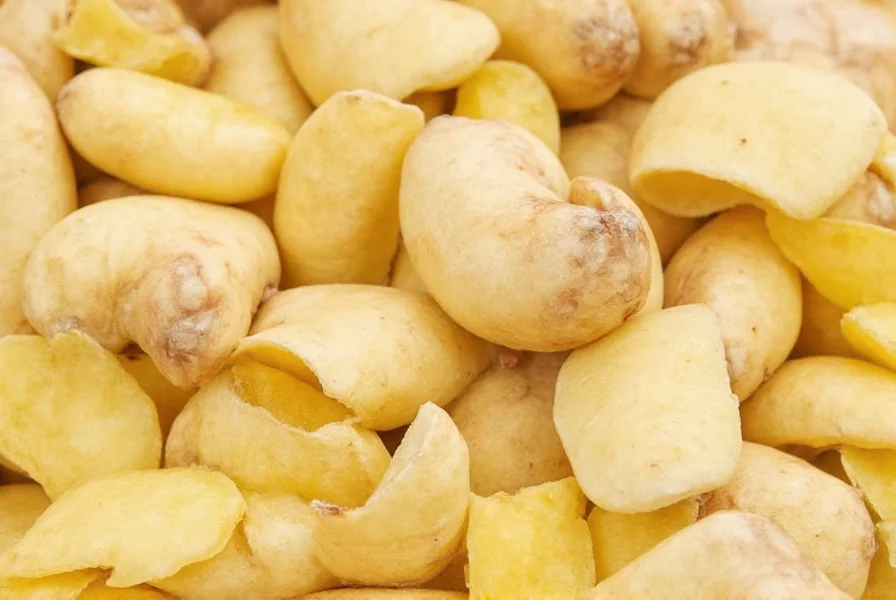Many home cooks and professional chefs wonder whether ginger skin is edible and if consuming it offers any benefits. The answer depends on the ginger's age, quality, and how you plan to use it in your cooking.
Understanding Ginger Skin Composition
Ginger root develops a protective outer layer that varies in thickness based on growing conditions and harvest time. Young ginger, often called spring ginger, features thin, smooth skin that's barely noticeable when cooked. As ginger matures, its skin becomes tougher and more fibrous.
From a nutritional standpoint, ginger skin contains similar beneficial compounds to the flesh beneath, including gingerols (the active compounds responsible for ginger's health properties) and dietary fiber. Research shows that many valuable phytochemicals concentrate just beneath the skin surface.
Safety Considerations for Eating Ginger Skin
When considering is ginger skin edible, several factors affect safety:
| Factor | Safe to Eat Skin? | Recommendation |
|---|---|---|
| Fresh, young ginger | Yes | Skin is tender and adds texture |
| Mature ginger | Sometimes | Peel if skin is thick and fibrous |
| Non-organic ginger | With caution | Wash thoroughly or peel to remove residues |
| Organic ginger | Generally yes | Wash well before use with skin |
Commercial ginger often receives wax coatings or pesticide treatments, making thorough cleaning essential. If you're uncertain about ginger skin safety concerns, peeling provides peace of mind, though you'll lose some nutrients concentrated near the surface.
Proper Cleaning Methods for Unpeeled Ginger
Before using ginger with skin intact, proper cleaning is crucial. Here's how to safely prepare ginger for consumption with skin:
- Rinse under cool running water to remove surface dirt
- Use a soft vegetable brush to gently scrub the skin
- For non-organic ginger, consider a vinegar solution soak (1 part vinegar to 3 parts water) for 15 minutes
- Rinse thoroughly again
- Pat dry with clean paper towels
When exploring how to clean ginger with skin, avoid harsh scrubbing that might damage the delicate surface and allow contaminants to penetrate.

Nutritional Benefits of Ginger Skin
The question does ginger skin have nutritional value has a definite yes. The skin and immediate subcutaneous layer contain concentrated amounts of:
- Gingerols and shogaols (anti-inflammatory compounds)
- Dietary fiber that supports digestive health
- Antioxidants that combat oxidative stress
- Small amounts of vitamins and minerals
Studies suggest that up to 20% of ginger's beneficial compounds reside in or just beneath the skin. When you peel ginger unnecessarily, you sacrifice these valuable nutrients. This makes understanding ginger skin nutrition facts important for health-conscious cooks.
Culinary Applications: When to Keep or Remove Skin
Chefs have different approaches to when to peel ginger based on the dish:
- Keep skin on: For teas, broths, and long-simmered dishes where texture isn't critical
- Peel ginger: For raw applications like salads, garnishes, or when smooth texture matters
- Special technique: For juicing, the skin often passes through filters, making peeling unnecessary
Many traditional Asian recipes specifically call for unpeeled ginger in certain preparations. The practice of eating ginger peel benefits culinary authenticity while maximizing nutrient retention.

Special Considerations for Different Ginger Types
Not all ginger is created equal when considering organic ginger skin consumption:
- Young ginger: Pale yellow with thin, almost translucent skin that's always edible
- Mature ginger: Darker brown with thicker, more fibrous skin that may require peeling
- Preserved ginger: Often peeled before preservation for better texture
- Candied ginger: Typically peeled for smoother final product
When shopping, look for firm, plump ginger with taut skin. Wrinkled or soft ginger indicates age, where the skin has likely become too tough for pleasant consumption.
Practical Tips for Using Ginger with Skin
Here are professional recommendations for maximizing your ginger experience:
- Use a spoon to easily peel mature ginger when needed (slides between skin and flesh)
- Freeze whole ginger then grate directly from frozen (skin comes off during grating)
- For tea, slice unpeeled ginger thinly to increase surface area and flavor extraction
- When making ginger shots, keeping the skin adds fiber and nutrients
Understanding these nuances helps answer the common question can you eat the skin of ginger with confidence for your specific culinary needs.











 浙公网安备
33010002000092号
浙公网安备
33010002000092号 浙B2-20120091-4
浙B2-20120091-4